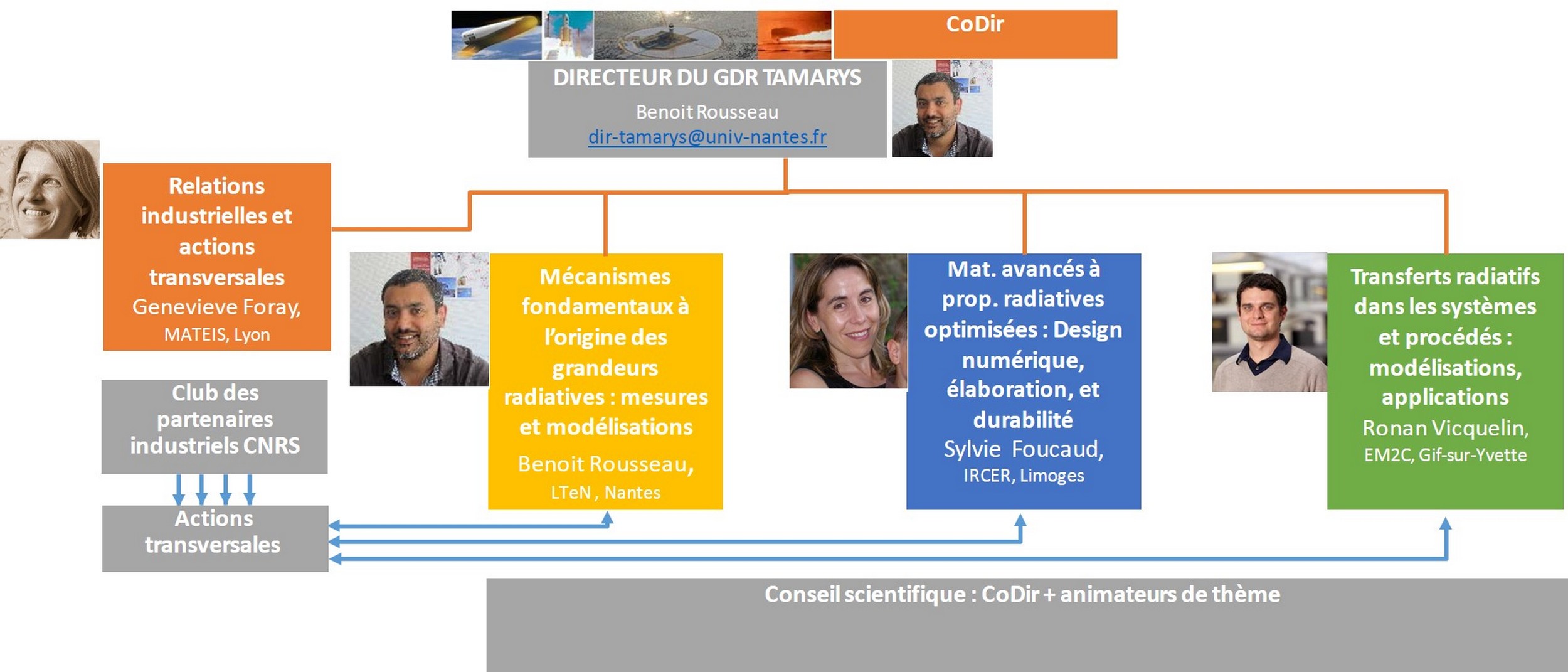The GDR TAMARYS, created on January 1, 2019, aims to bring together specialists in materials science and heat transfer science to remove the multi-scale and multi-physical obstacles encountered in the development of industrial processes and systems dominated by radiative transfers. .
This complex issue today covers both the high temperature crystal growth of single crystals, the optimization of combustion chambers in aircraft engines and the development of chemical conversion processes for the production of synthesis gas from SMR furnaces. (Steam Methane Reformer) or POX oven (Partial Oxidation of methane). At the CNRS level, the actors concerned mainly come under the INC (Institute of Chemistry) and INSIS (Institute of Engineering and Systems Sciences) and more particularly in the disciplinary fields falling under sections 10 (Environments fluids and reagents: transport, transfers, transformation processes) and 15 (Chemistry of materials, nanomaterials and processes). More than 130 permanent researchers and engineers, distributed in 20 academic laboratories and 6 research centers, are mobilized within this GDR by essence, multidisciplinary. The ambition here is to promote, through scientific animation, the conditions of exchange, the confrontation of ideas between academic researchers and industrial managers, experimenters and numericians, chemists and physicists, in order to advance knowledge and their dissemination within the GDR by anchoring transversality reflexes. The emulation thus created will make it possible, in the medium term, to offer advanced materials making it possible to design sustainable, economically viable and low-energy systems and processes for conditions of use in a real environment and therefore potentially aggressive (high temperatures, reactive flows , corrosive atmospheres,…).
It is within this scientific and technological framework requiring to combine know-how hitherto dissociated between specialists in materials and heat transfers that the GDR TAMARYS community will tackle (Figure 1). His work will be based on the following triptych: i) a strong fundamental base (quantum mechanics, condensed matter physics, wave-matter interaction, statistical physics) in order to define the multi-scale physical mechanisms governing radiative quantities, ii) a thorough mastery of the development and characterization of durable materials and iii) the implementation of rapid, precise and robust numerical methods for the resolution of heat transport equations regardless of the regimes endured by the systems and processes . This “bottom-up” scientific organization, ranging from the atom to the system, is superimposed on unifying transversal themes, their contours being dynamic and defined with the support of members of the CNRS industrial partner club. As such, the construction of the GDR put forward 4 transversal actions: concentrated thermodynamic solar energy, the recovery of high temperature heat in intensive industry, the atmospheric reentry of spacecraft, and the radiative control of systems and processes (building , solar power plants).



